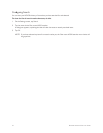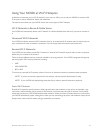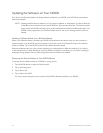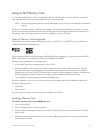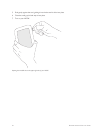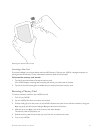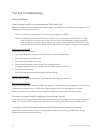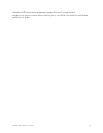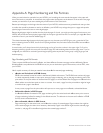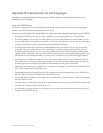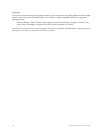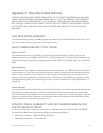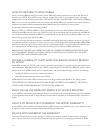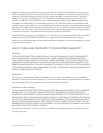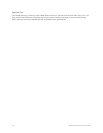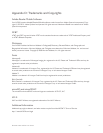100 Barnes & Noble NOOK User Guide
Appendix A: Page Numbering and File Formats
When you read a book or periodical on your NOOK, you’re reading the same words that appear in the paper edi-
tion of the book or periodical. In most books, the page number that appears at the bottom of the screen is the page
number you would see if you were reading the printed version of the same book.
Because printed pages can be larger than the screen of your NOOK, and because many printed books use type that
is smaller than would be pleasant to read on an eReader, your NOOK may enlarge the type on a page and spread a
physical page of text across two or more digital pages.
Because digital pages might be smaller than the physical pages of a book, you might turn the page a few times on your
NOOK and still see the same physical page number in the upper right hand corner. For example, you might find three
screenfuls of text in your book all labeled page 47.
The relation between digital pages and physical pages can vary, because your NOOK gives you a great deal of free-
dom in choosing the size of fonts, the amount of spacing between lines, and other factors that aect how text flows
onto a page.
In most books, you’ll always know which physical page you’re on from the number in the upper right. So if you’re
discussing a book in a book club, everyone can refer to page 295 and be talking about the same page, even if you’ve
configured your NOOK to use small type and single-spacing and everyone else in the group is using large type and
double-spacing.
Page Numbering and File Formats
There are several dierent formats for eBooks, and these dierent formats treat page numbers dierently. Barnes
& Noble eBooks are published in the EPUB format, but you can load other types of documents, such as PDFs, onto
your NOOK.
Here’s a quick summary of what you need to know about file formats and page numbering:
• eBooks and Periodicals in EPUB format
EPUB is the standard format for books in the Barnes & Noble online store. The EPUB format numbers all pages
in a book sequentially, based on some prior account of page numbering, such as the page numbering used in the
print edition. If the print edition of the book had 525 pages, so will the eBook. But the pages are re-flowed in the
eBook edition to make them easier to view on a screen. As a result, a page from the print edition might be larger
or smaller than a page in the eBook.
In many cases, a page from the print edition will span two or more pages on an eReader, as described above.
• Reflowable eBooks in PDF Format
In reflowable eBooks formatted in PDF, page numbering is for the entire book and reflects some prior account
of page numbering, before formatting for the eBook text size. The behavior is the same as for eBooks in EPUB
format, which is described above.
• Non-reflowable eBooks in PDF format
Page numbering is for the entire book, and reflects the number of scanned pages. Page numbers also might be
on the scanned pages, but there is no necessary relationship. Page 6 in the eBook might have the scanned page
number iv, and page 30 in the eBook might have the scanned page number 5.



